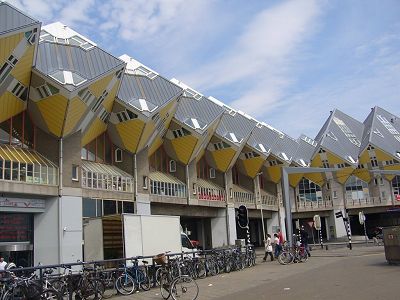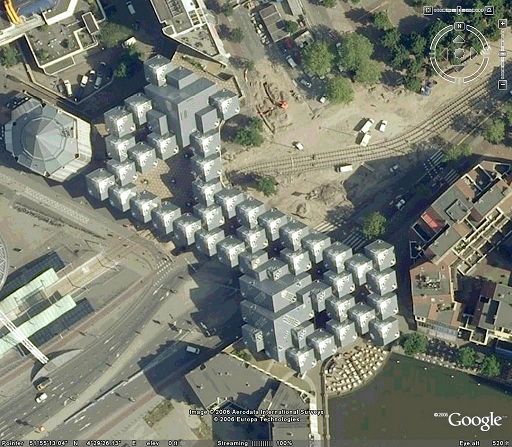Lately, we published snow sculpture by Bathsheba Grossman which was represented at Breckenridge snow sculpture contest. Here some other mathematical snow sculptures represented at Breckenridge in other years.
 Knot divided (2005)
Knot divided (2005)This is a triply twisted Moebius band. There is a self-referential beauty in our sculpture: If one forms a Moebius band by twisting a belt through three half-turns (instead of just one), then the band's edge forms a trefoil knot.
 Whirled White Web (2003)
Whirled White Web (2003)This sculpture is a 3-fold symmetrical whirl of twisted and stretched saddle shapes. Such saddles occur naturally in soap films that are spanning warped wire frames; such "minimal surfaces" are nature's way of creating strength in delicate structures. Our sculpture uses these natural ideas to create an intricate network of ribs and internal spaces suspended from a web of three mutually interwoven double loops.
 Turning a Snowball Inside Out (2004)
Turning a Snowball Inside Out (2004)In the 1960s, mathematicians showed how to turn a sphere inside out. To do this, the surface must pass through itself, but no tears or creases are allowed to form at any point. This design is an artistic interpretation of the halfway point of such a sphere-everting process, where the surface displays half of its outside, shown as a solid form, as well as half of its inside, rendered as a transparent grid.

Here we see a snail shell but it's also a representation of fractal twisting to it's center.
This article was created by materials of
http://www.cs.berkeley.edu/~sequin/SCULPTS/sculpts.html
This article was created by materials of
http://www.cs.berkeley.edu/~sequin/SCULPTS/sculpts.html
































